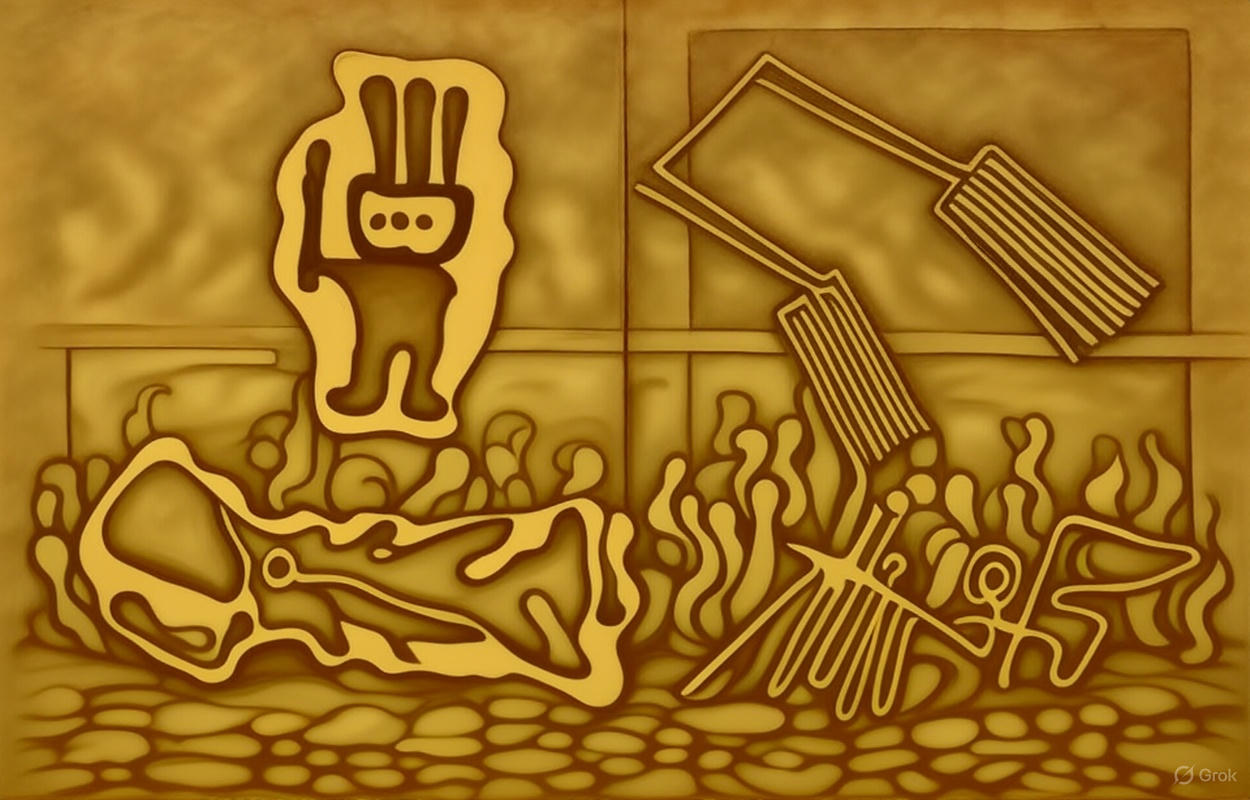AI Discovery Unveils Over 300 New Nazca Lines in Peru
Introduction
On September 28, 2025, an exciting archaeological breakthrough was revealed on X by Massimo (@Rainmaker1973). Using artificial intelligence, researchers led by Masato Sakai from Yamagata University uncovered over 300 previously unknown Nazca Lines in southern Peru’s Nazca Desert. This discovery nearly doubles the number of known geoglyphs and provides fresh insight into one of the world’s most mysterious ancient civilizations.
What Are the Nazca Lines?
The Nazca Lines are large geoglyphs etched into the desert floor by the Nazca civilization over 2,000 years ago. Famous for depicting animals, plants, and humanoid forms, these geoglyphs were created by removing dark topsoil to reveal the lighter soil beneath. They are a UNESCO World Heritage site and have puzzled archaeologists since their rediscovery in the 1920s.
An AI research uncovered over 300 new Nazca Lines.
— Massimo (@Rainmaker1973) September 28, 2025
Researchers have used artificial intelligence to uncover over 300 previously unknown geoglyphs in the Nazca Desert of southern Peru.
This recent finding, led by Masato Sakai from Yamagata University, nearly doubles the total… pic.twitter.com/Cc5YFtzExQ
How AI Helped Discover 300+ New Geoglyphs
Traditionally, spotting Nazca Lines relied on aerial surveys or satellite imagery. The team led by Masato Sakai used AI algorithms to scan high-resolution satellite images, identifying patterns invisible to the human eye. Many of the newly found geoglyphs are smaller and subtler than the iconic figures, making them nearly impossible to detect without advanced technology.
Notable Geoglyphs Found Include:
- Humanoid figures with rectangular heads and raised arms
- Stylized animal shapes, including llamas, birds, and possibly monkeys
- Handprints with exaggerated fingers and symbolic circular markings
- Abstract or celestial motifs that may reflect rituals or astronomical observations
Significance of the Discovery
Before this discovery, only around 430 geoglyphs were documented. Adding over 300 new figures suggests the Nazca civilization had a more complex and rich cultural landscape than previously thought. Archaeologists speculate that the geoglyphs may have served:
- Religious or ceremonial purposes
- Markers for pilgrimage routes to sacred sites like Cahuachi Temple
- Symbols related to water and agriculture in the arid desert
The diversity of the newly discovered geoglyphs strengthens theories that the Nazca people had sophisticated social and religious structures.
Public Reaction and Insights
The AI-aided discovery quickly became a trending topic on X. Responses ranged from awe at the scale and creativity of the geoglyphs to playful humor likening them to “Nazca Emojis.” Scholars emphasize the philosophical and historical importance, suggesting that technology is reshaping our understanding of ancient civilizations.
FAQs
- Q1: How were the new Nazca Lines discovered?
- A1: Researchers used AI algorithms to analyze satellite images, detecting patterns too subtle for the human eye.
- Q2: How many Nazca Lines are now known?
- A2: With this discovery, there are over 730 documented geoglyphs, nearly doubling the previously known 430.
- Q3: Why are the Nazca Lines important?
- A3: They provide insight into the religious, cultural, and social practices of the Nazca civilization and remain a key UNESCO World Heritage site.
- Q4: Can tourists see these new geoglyphs?
- A4: Some geoglyphs are viewable from small aircraft tours or satellite imagery. Many are in remote areas and not easily accessible.
Conclusion
The recent AI-assisted discovery of over 300 new Nazca Lines represents a milestone in archaeology and ancient history studies. This breakthrough demonstrates the potential of technology to unlock mysteries hidden for millennia. While the purpose of the geoglyphs remains debated—ranging from ceremonial functions to astronomical observations—the findings enrich our understanding of the Nazca civilization and remind us that history still has countless secrets waiting to be unveiled.
Neutral Intellectual Insight: This discovery highlights a critical shift in historical research: technology is not merely a tool but a transformative lens for understanding human civilizations. AI enables us to uncover narratives long buried in time, challenging conventional knowledge and inspiring deeper inquiry into humanity’s collective past.


0 comments